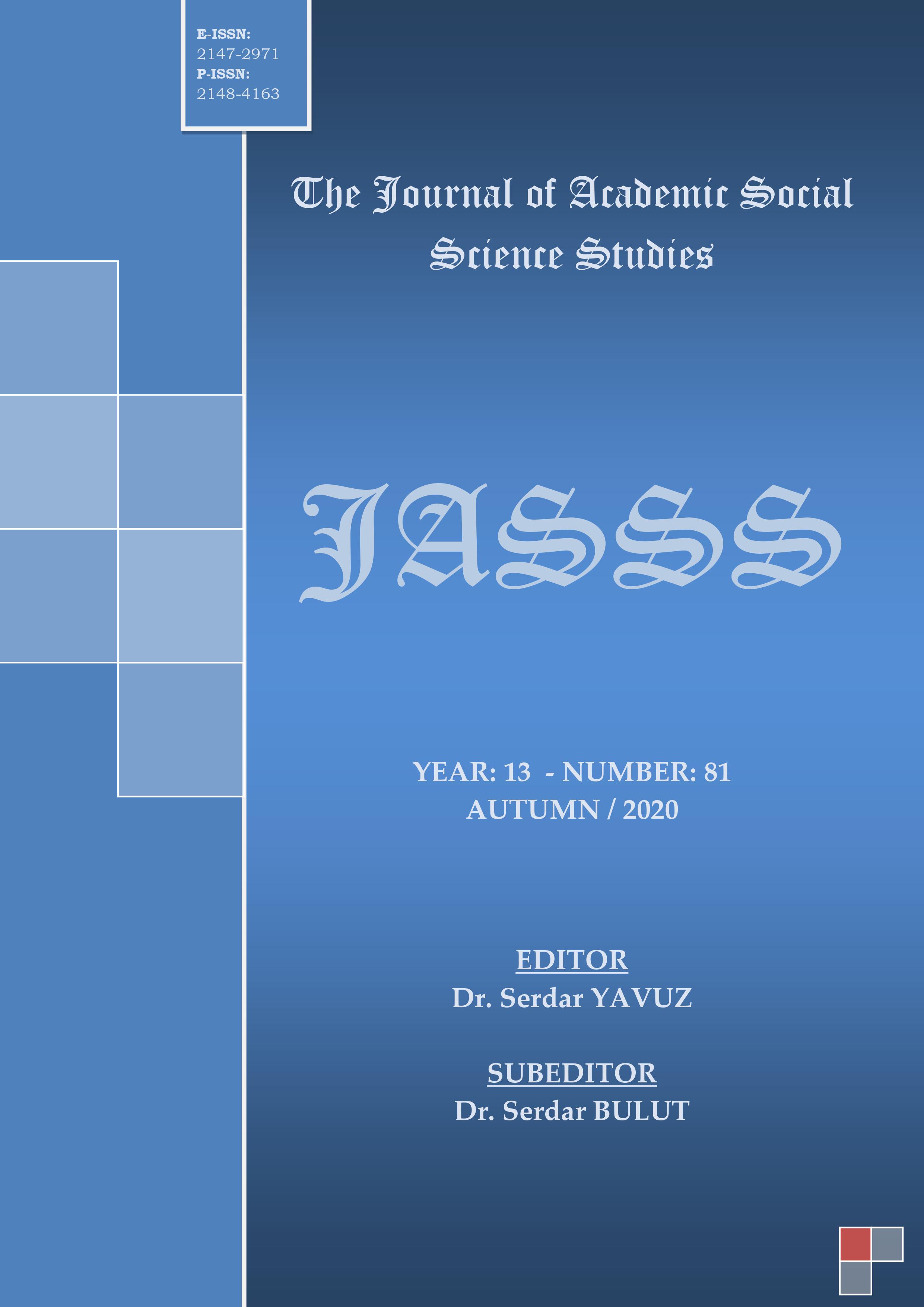“KODALY” ŞARKI SÖYLEME MERKEZLİ MÜZİK ÖĞRETİM YÖNTEMİNİN İNCELENMESİ VE KOKAS PEDAGOJİSİ DESTEKLİ BİR ÖRNEK DERS MODELLEME ÇALIŞMASI
Author :
Abstract
Ülkemizde, diğer müzik eğitimi yöntemleriyle kıyaslandığında daha az uygulanan Kodály yöntemi, bir yaklaşım değil, bir sistem olması nedeniyle farklılık ve önem taşır. Bu farklılığı yaratan en önemli unsurlardan biri, solfej eğitimi konusunda etkili olmasıdır. Kodály yöntemi, müzik öğrenimi yolunda her gereksinimin titizlikle belirlendiği ve bu gereksinimlere yanıt vermek üzere her aşamanın özenle kurgulandığı bir bütündür. Temel çalgısının her bireyin kendi sesi olduğu görüşü üzerine oturtulan, müzik eğitimine aktif katılımın öneminin her zaman vurgulandığı, işitme becerisinin geliştirilmesi ve müzikal okuryazarlığın artmasının amaçlandığı yöntemde, erken dönem müzik eğitimi önemli bir yer kaplar. Bu sistemde çocukluktan başlayıp yetişkinliğe kadar uzanan süreçte müzikal anlamda okuryazar bireylerin yetiştirilmesi hedeflenir. Müzikal altyapısı donanımlı ve kültürlü şarkıcıların yetişmesi için erken dönem müzik eğitiminin önemi yadsınamaz. Ülkemizde Ses Eğitimi ile ilgili bölümlere lisans düzeyinde öğrenci kabul edildiği düşünüldüğünde, bu sistemin bireye kazanımlarının geleceğin profesyonel şarkıcılarına gerek ensemble çalışmalarında gerekse müzikal yaratıcılık, improvizasyon ve yorumculuk yönlerine katkı sağlayacağı öngörülmektedir. Eldeki çalışma Kodaly Eğitim Pedagojisinin ilkeleri doğrultusunda bir örnek ders modellemesi tasarlamayı amaçlamıştır. Bloom’un Taksonomisi yani Tam Öğrenme Modeline uygun olarak Kodaly’nin Fonomimi, Tartımmimi, Parmak Portresi, Tonik Sol-Fa, Çubuk Notasyon gibi teknikler kullanılarak nota harfleri, şifreler, tetratonik ve pentatonik diziler ile duyma ve improvizasyona dayalı bir model çalışma ortaya konmuştur. Kodaly’nin bu tekniklerini kullanılarak tam öğrenme ilkelerine hizmet eden bilişsel, duyuşsal ve psikomotor aktivitelerle bir örnek müzik dersi nasıl planlanabilir sorusuna cevap aramaktadır.
Keywords
Abstract
Compared to other music education methods in our country, the lesser Kodály method is different and important since it is a system, not an approach. One of the most important factors that make this difference is that it is effective in solfege education. The Kodály method is a whole where every requirement is meticulously determined in the way of learning music and every stage is carefully constructed to respond to these needs. Early music education occupies an important place in the method, based on the opinion that its basic instrument is the voice of each individual, where the importance of active participation in music education is always emphasized, the development of hearing skills and the increase of musical literacy are aimed. In this system, it is aimed to educate literate individuals in the musical sense in the process starting from childhood to adulthood. The importance of early music education for the training of well-educated and cultured singers is undeniable. Considering that students are accepted to departments related to Voice Education in our country at the undergraduate level, it is foreseen that the achievements of this system will contribute to the professional singers of the future both in ensemble works and musical creativity, improvement and interpretation. The present study aimed to design a sample course modeling in line with the principles of Kodaly Education Pedagogy. In accordance with Bloom's Taxonomy, that is, the Full Learning Model, Kodaly's Fonomimi, Weighing, Finger Portrait, Tonic Sol-Fa, Stick Notation, and a model study based on hearing and improvization have been introduced. The study seeks to answer the question of how to plan a sample music lesson with cognitive, affective and psychomotor activities that serve the principles of full learning by using these techniques of Kodaly.
Keywords
- Boshkoff, R. (1991). Lesson Planning the Kodály Way. Music Educators Journal. Ekim 30-34.
- Çaytemel, S. (2017). Gençlerin Yaratıcılığında Müzik Öğreniminin Etkileri, Yayınlanmamış Yüksek Lisans Tezi, Haliç Üniversitesi, İstanbul.
- Deszpot, G. (2015). Musical Transformation . In: Kiss László, Lutter Imre (ed.): Learn and Teach The Better! Differentiating Pedagogical Methods and Mentoring - A Collection of Methodological Texts. Association of Hungarian Poets, Budapest. 175 p. ISBN 978-963-12-3389-5 145-151
- Gardiner M. F. (2000). Music, Learning, and Behavior: A Case for Mental Stretching. Journal for Learning Through Music, 72-93.
- Gardiner, M. F., Fox, A., Knowles, F., & Jefrey, D. (1996). Learning improved by Arts Training. Nature, 381(6580), 284-284.
- Geoghegan, N., MitchelmoreI, M. (1996). Possible Effects of Early Childhood Music on Mathematical Achievement. Australian Research in Early Childhood Education, 1, 57-64.
- Gromko, J. E. (2005). The Effect of Music Instruction on Phonemic Awareness in Beginning Readers. Journal of Research in Music Education, 53(3), 199-209.
- Houlahan, M., Tacka, P. (2015). Kodály Today, A Cognitive Approach to Elemantary Music Education. Oxford University Press, United States of America
- Hurwitz, I., Wol, P. H., Bortnick, B. D., Kokas, K. (1975). Nonmusicol Effects of the Kodály Music Curriculum in Primary Grade Children. Journal of Learning Disabilities, 8(3), 167-174.
- Kodaly, Z. (1974). Selected Writings, Corvina Press, Budapest.
- Luca, T. (2018). Therapeutic Application of The Kokas-Method in Music Therapy for People with Severe Disabilities, Journal of Russian&East European Psychology, Volume 55, Issue1: Music Therapy, 85105.
- Müzik Dersi Öğretim Programı, MEB, Ankara, 2017.
- Özeke, S. (2007). Kodály Yöntemi ve İlköğretim Müzik Derslerinde Kodály Yöntemi Uygulamaları. Uludağ Üniversitesi Eğitim Fakültesi Dergisi XX (1), 111-119.
- Pekdemir, R. (2015)., Nasyonalizmin Bela Bartok’un Müziğine Etkisi, Yayınlanmamış Yüksek Lisans Tezi, Anadolu Üniversitesi, Eskişehir.
- Pukanszk, B., Nemeth, A. (1996). Nevelestörtenet “History of Education” Budapest: Nemzeti Tankönyvkiado.
- Saygun, A. A. (1986). Türk Halk Musikisinde Pentatonizm Broşürü Üzerine, Orkestra Aylık Müzik Dergisi, S.160.
- Schellenberg, E. G. (2004). Music Lessons Enhance IQ. Psychological Science, 15(8), 511-514.
- Şimşek, P. R., Bilen, S. (2017). Etkili müzikal okuryazarlığa ulaşmak: Kodály Yöntemi, Journal of Human Sciences, 14(4), 4308-4319.
- Uçan, A. (1999). İlköğretimde Müzik Öğretimi, Millî Eğitim Bakanlığı: İlköğretimde Etkili Öğretme ve Öğrenme Öğretmen El Kitabı – Modül 9, Ankara: MEB Projeler Koordinasyon Merkezi Başkanlığı Yayınları
- Vass, E. (2018). Musical co-creativity and learning in the Kokas pedagogy: Polyphony of movement and imagination, School of Education, Western Sydney University, Australia.
- Yıldırım, K. (1995). Kodály Yöntemi ile Müzik Eğitimi, Yayınlanmamış Yüksek Lisans Tezi, Dokuz Eylül Üniversitesi Sosyal Bilimler Enstitüsü, İzmir.
- Yiğit, E. F. (2000). Müzik Eğitiminde Kodaly Metodu’nun Rolü, Yayınlanmamış Yüksek Lisans Tezi, Dokuz Eylül Üniversitesi Eğitim Bilimleri Enstitüsü, İzmir.
